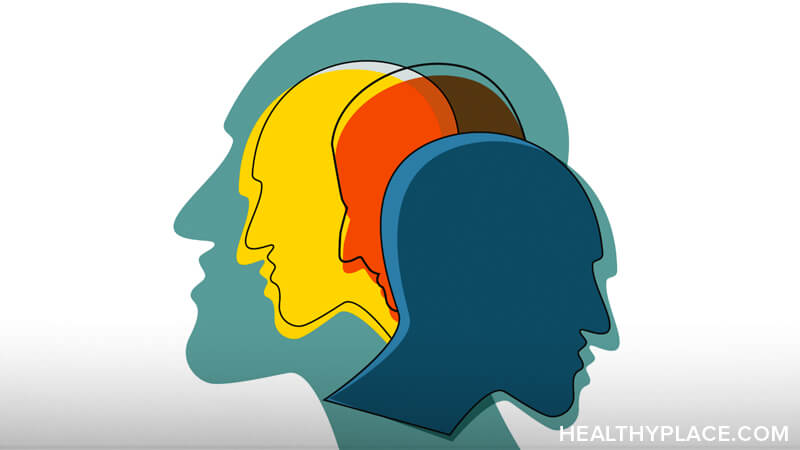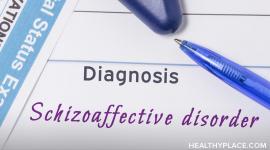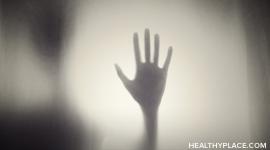What are the Types of Schizoaffective Disorder?

Schizoaffective disorder is a mental illness in which symptoms of schizophrenia and symptoms of a mood disorder are present. Just as there is more than one type of mood disorder, there is accordingly more than one type of schizoaffective disorder.
The types of schizoaffective disorder include bipolar type and depressive type. These are more than just ways to describe the illness. The type is specified when the diagnosis is given: someone receives an official diagnosis of either schizoaffective disorder bipolar type or schizoaffective disorder depressive type.
The bipolar type involves at least one manic episode. If someone with schizoaffective disorder has ever experienced mania, then he has the bipolar type. His mood symptoms might only be manic, or he may also experience periods of depression. Either way, his schizoaffective disorder is bipolar type.
The depressive type of schizoaffective disorder is diagnosed if the mood symptoms are only related to depression. Schizoaffective disorder depressive type can involve any symptoms of depression, but the symptom that must be present is a persistent low mood.
With either type of schizoaffective disorder, mood symptoms must be present for the majority of the illness. Other than a period of time that lasts at least two weeks during which the person experiences psychotic symptoms but not mood symptoms, the mania or depression must be persistent during the illness.
Schizoaffective Disorder, Either Type
Schizoaffective disorder does include mood symptoms, but it’s important to remember that mood isn’t the only component of this illness. Schizoaffective disorder is categorized as a psychotic disorder.
Regardless of which type someone experiences, she will also have the psychotic symptoms of schizophrenia. These are
- Delusions
- Hallucinations
- Disorganized speech (speech that is easily derailed or is incoherent)
- Grossly disorganized or catatonic behavior
- Negative symptoms (flat expressions, loss of pleasure/anhedonia, lack of motivation/avolition, and other experiences that are “taken away” from the person)
Depending on the type of schizoaffective disorder, someone will also experience the symptoms of bipolar disorder or the symptoms of major depressive disorder.
Schizoaffective Disorder Bipolar Type
To be diagnosed with the bipolar type, someone must experience at least one period of mania. Schizoaffective disorder bipolar type symptoms include:
- Excessively elevated, happy, excited, euphoric mood
- Expansive mood in which she is very talkative and overly enthusiastic
- Talking with excessive emphasis on certain
- Persistent irritability and even anger, especially when someone interferes in his plans
- Grandiosity, an inflated sense of self-importance and self-esteem
- Unrealistic belief in her abilities, to the point of delusion
- Acting on the delusions of grandeur
- Decreased need for sleep
- Racing thoughts and pressured expression of those thoughts (and others have difficulty understanding him)
- Extreme distractibility so that the slightest thing derails her
- An increase in goal-directed activity, involving hyper-focus despite distractibility
- Risk-taking behaviors, especially spending money, substance use, and/or sexual promiscuity
Symptoms of schizoaffective disorder bipolar type can also involve depressive symptoms, but to be bipolar type, symptoms must include the symptoms of mania.
Schizoaffective Disorder Depressive Type
When someone has psychotic symptoms and depressive symptoms without an episode of mania, she will be diagnosed with the depressive type of schizoaffective disorder. The schizoaffective disorder depressive type symptoms include these mood symptoms:
- Low mood most of the day, nearly every day
- Lost of interest in activities once enjoyed
- Decreased ability to feel pleasure
- Sense of hopelessness
- The feeling that life has no meaning
- An inappropriate sense of guilt (feeling responsible for things that are out of his control)
- Feeling unlovable and unworthy
- Reduced activity
- Lethargy
- Slow movement
- Fatigue and loss of energy
- Sleeping problems (sleeping too much or too little)
- Change in appetite and weight
- Difficulty concentration and making even small decisions
A key element in the depressive type of schizoaffective disorder is low mood. To receive this diagnosis, someone must have a pervasive depressed mood. In schizophrenia, loss of interest and pleasure and other experiences are part of the negative symptoms that define the illness. Therefore, to be schizoaffective disorder depressive type, these symptoms aren’t enough. Someone’s mood must be consistently depressed.
The two types of schizoaffective disorder—bipolar type and depressive types—are part of someone’s diagnosis because knowing the type and the symptoms that go with it help determine what treatments and schizoaffective disorder medications are likely to work best. Just as bipolar disorder and major depressive disorder are managed differently, so too are the different types of schizoaffective disorder.
APA Reference
Peterson, T.
(2021, December 22). What are the Types of Schizoaffective Disorder?, HealthyPlace. Retrieved
on 2026, January 9 from https://www.healthyplace.com/thought-disorders/schizoaffective-disorder-information/what-are-the-types-of-schizoaffective-disorder

